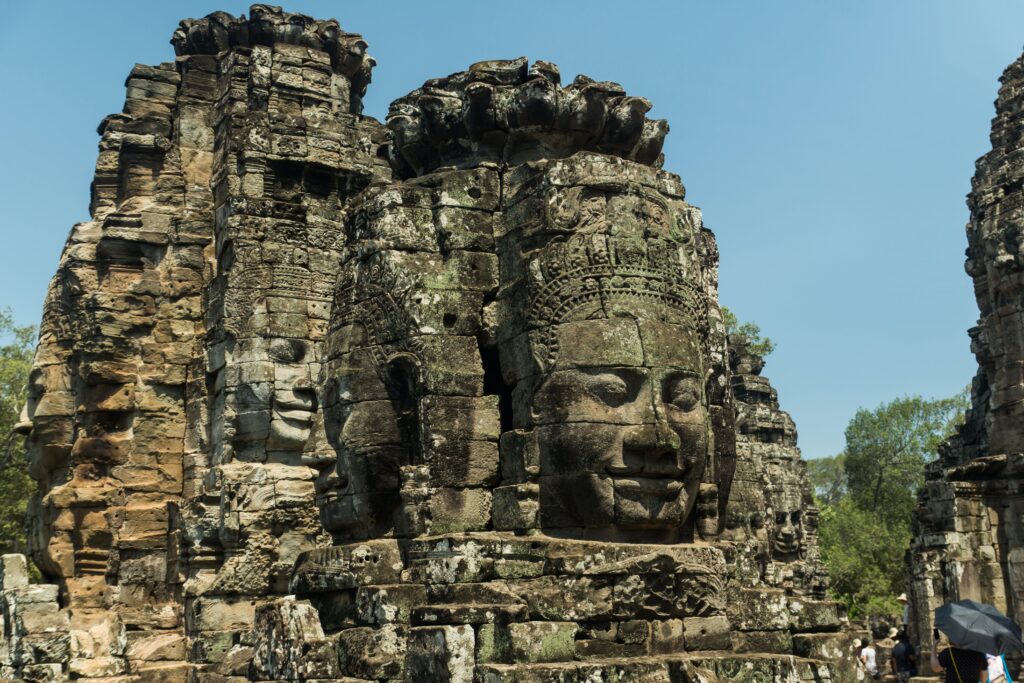The Bayon (KHMER: ប្រាសាទបាយ័ន, Prasat Bayon) is a well-known and richly decorated KHMER temple at ANGKOR in CAMBODIA. Built in the late 12th century or early 13th century as the official state temple of the MAHAYANABUDDHIST King JAYAVARMAN VII, the Bayon stands at the centre of Jayavarman’s capital, ANGKOR THOM. Following Jayavarman’s death, it was modified and augmented by later HINDU and THERAVADA Buddhist kings in accordance with their own religious preferences.The Bayon’s most distinctive feature is the multitude of serene and massive stone faces on the many towers which jut out from the upper terrace and cluster around its central peak. The temple is known also for two impressive sets of BAS-RELIEFS, which present an unusual combination of MYTHOLOGICAL, HISTORICAL, and mundane scenes. The current main conservatory body, the JAPANESE GOVERNMENT team for the Safeguarding of ANGKOR (the JSA) has described the temple as “the most striking expression of the baroque style” of KHMER ARCHITECTURE, as contrasted with the classical style of ANGKOR WAT.
Bayon has some 50 towers, with four huge carved faces on most of them. Each of the four faces are four metres high and oriented toward the four points of the compass. The faces all have the same strange smile and closed eyes, creating a mysterious and serene countenance, representing an all-knowing state of inner peace, and perhaps a state of Nirvana.
There is debate as to who the faces actually represent, and some theories put forward say that they are the face of a Bodhisattva (Buddhism’s compassionate and enlightened being), or a combination of Buddha and Jayavarman VII. Bayon was constructed as Jayavarman VII’s state-temple, and it represents the height of his massive building program.
Bayon is rich in decoration, and the bas-reliefs on the exterior walls of the lower level and on the upper level are outstanding. The bas-reliefs on the southern wall are of scenes from a sea battle between the Khmer and the Cham. However, it is not known if they represent the Cham invasion of 1177AD, or a later victorious battle for the Khmer. There are also interesting and extensive carvings of scenes from everyday life, including market scenes, religious rituals, cockfighting, chess games and childbirth. Of note are the unfinished carvings on some walls, which were probably not finished due to the death of Jayavarman VII.


